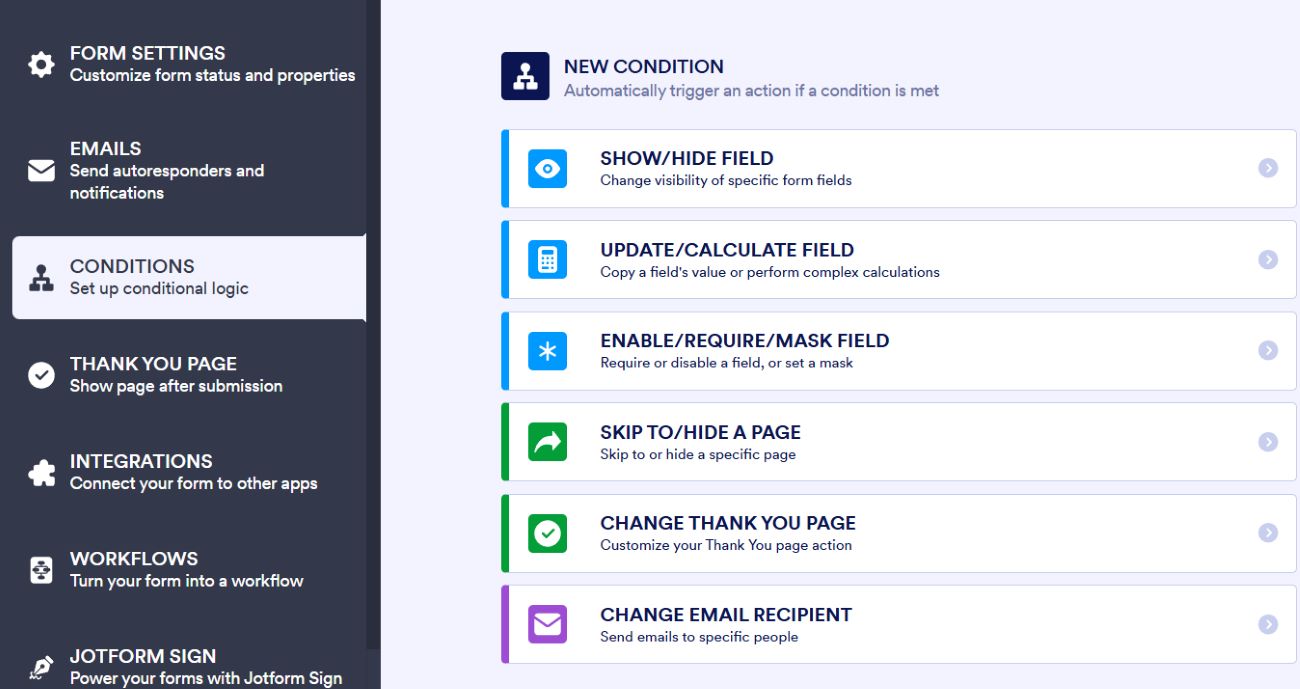Unhappy employees tend to commit errors and are even less productive. They tend to disengagement, absenteeism, and resignation later on. The happy and engaged employees are more productive, innovative, and loyal, leading to increased profitability and reduced turnover. That’s why it is important to know how your employees feel about their jobs, work environment, and organization as a whole.
This guide will provide a comprehensive overview of how to survey employee satisfaction effectively, from understanding the basics to implementing actionable strategies.
Table of Contents
What is Employee Satisfaction
Employee satisfaction refers to how content and fulfilled the employees are about their jobs and environment. It reflects how well their needs, expectations, and desires are met.
Elements of Employees’ Satisfaction
There are several key elements that we can say an employee is satisfied with his work. And these elements include:
- Job Security: If the job is stable and offers opportunities for career development, employees feel secure in their positions.
- Work-Life Balance: An employee needs personal time and family time and that contributes to a healthy work-life balance.
- Compensation and Benefits: Competitive salaries, comprehensive benefits packages (health insurance, retirement plans, etc.), and opportunities for bonuses and rewards make a company attractive and promote high retention rate.
- Opportunities for Growth and Development: Opportunities for professional development, such as training programs, mentorship, and skill-building initiatives, are highly valued. And that makes employees feel valued.
- Recognition and Appreciation: Employees need to feel valued and appreciated for their contributions. Regular feedback, recognition programs, and opportunities for advancement can significantly boost morale.
- Positive Work Environment: A positive and supportive work environment, free from discrimination and harassment, is essential for employee well-being. This includes fostering a culture of respect, inclusion, and collaboration.
- Meaningful Work: Employees want to feel that their work has purpose and makes a difference. When employees feel that their contributions are valuable and meaningful, they are more likely to be satisfied and engaged.
Why Measuring Employee Satisfaction Matters
As an employer, it’s a great responsibility to make sure that all your employees are satisfied. Here are the several reasons why measuring employee satisfaction really matters:
- Increased Productivity and Performance: Satisfied employees are more productive, innovative, and engaged. They are more likely to go the extra mile, take initiative, and contribute positively to the organization’s goals.
- Reduced Turnover: High employee turnover can be costly and disruptive. By addressing employee satisfaction issues proactively, organizations can reduce turnover rates and retain valuable talent.
- Improved Customer Service: Satisfied employees are more likely to provide excellent customer service. Happy employees are more patient, helpful, and enthusiastic, leading to increased customer satisfaction and loyalty.
- Enhanced Company Reputation: A strong employer brand attracts top talent and improves the company’s reputation in the job market. By demonstrating a commitment to employee well-being, organizations can build a positive employer brand and attract and retain the best employees.
- Data-Driven Decision Making: Employee satisfaction surveys provide valuable data that can be used to make informed decisions about workplace policies, programs, and initiatives. This data can help organizations identify areas for improvement and implement targeted interventions to boost employee morale and engagement.
8 Steps for Measuring Employee Satisfaction
There are several steps for measuring employee satisfaction, and these are:
1. Administering employee satisfaction surveys
Employee feedback is most frequently gathered through surveys. These surveys typically incorporate a variety of question formats, including multiple-choice, Likert scales, open-ended questions, and sections for qualitative feedback.
Surveys should comprehensively assess the employee experience. The survey include evaluating factors such as:
- Job satisfaction,
- Company culture,
- Work-life balance,
- Quality of health benefits,
- Career development opportunities, and
- Quality of relationships with supervisors and colleagues.
Conducting surveys to measure employee satisfaction should be done regularly. It can be done quarterly or annually to track trends and identify areas for improvement. This can be done by utilizing online survey tools, paper surveys, or a combination of both methods.
2. Choosing the Best Employee Survey Tools
Select survey tools that prioritize user-friendliness, anonymity to encourage honest feedback, the ability to generate actionable insights, and integration with other HR systems.
A wide array of software options exists for conducting employee surveys like SurveyMonkey, Qualtrics, JotForm or Google Forms.
We’ll use the JotForm to show you the process of conducting surveys.
JotForm is a drag-drop survey maker. They offer ready made templates you can use depending on the purpose of your survey. You can use their blank template so that you can add your own questions, set up conditional logic, and etc.
Additionally, their ready made templates allow you to add elements to improve the template. You can add the Full Name, Address, Contact Information, and etc.
With JotForm, you can customize the form settings. You can set autoresponders and notifications, set up conditional logic, and etc.

Once your form is ready, you can publish it in so many options such as:
- Direct form link and social share
- Embedding the form to your website
- Assigning your form to others
- Sharing the form via email
Lastly, JotForm is integrated with different communication tools such as:
- Slack
- Facebook Messenger
- Microsoft Teams
- On24
3. Maintaining Anonymity and Confidentiality
Foster an environment of open and honest feedback by emphasizing the anonymity and confidentiality of employee responses. This reassures employees that their opinions can be shared freely without the fear of repercussions.
4. Defining Clear Objectives
Establish clear goals and objectives for the survey. These might include identifying areas for improvement, evaluating the effectiveness of current policies or programs, or assessing overall employee morale.
You may start asking yourself these questions:
- What specific information am I hoping to gather?
- How will I use the data to make improvements?
Remember that a well-defined objective serves as a roadmap for designing survey questions and interpreting the resulting data effectively.
5. Interpreting Survey Results
Upon data collection, conduct a thorough analysis to identify key trends, patterns, and areas of concern.
This analysis should encompass both quantitative data, such as average satisfaction ratings, and qualitative feedback, such as comments or suggestions, to gain a holistic understanding of employee sentiment.
You may use data visualization tools such as charts, graphs, and etc to effectively present and communicate the results.
6. Implementing Feedback Effectively
Leverage survey insights to drive decision-making and implement changes that address areas of dissatisfaction and enhance employee satisfaction.
To promote employee satisfaction, you may develop actionable plans that may include:
- Revising policies and procedures,
- Providing enhanced training or support, and
- Introducing new initiatives based on employee feedback.
Additionally, you may incorporate the data from the results into future survey iterations.
7. Sharing Survey Results and Action Steps
Transparent communication of survey results is crucial to demonstrate that employee feedback is valued and heard.
Clearly communicate any action plans or initiatives stemming from the survey findings, and provide regular updates on the progress of these implementations. You can share the survey results with the management through email, written reports, and the survey tool if it has a feature for sharing survey results.
8. Ongoing Monitoring and Assessment
The steps on how to survey employee satisfaction doesn’t end from sharing the survey and your action plans. You must continuously monitor and assess how your employees are feeling about their jobs and environment.
Employee satisfaction is a dynamic factor that requires ongoing monitoring and evaluation. Regular assessment on satisfaction levels and monitoring the impact of implemented changes are very important.
Remember that follow-up surveys and regular satisfaction checks track the progress and determine new roots for improvement. Lastly, make sure to regularly review and update your satisfaction survey to ensure its relevance and effectiveness.
📌Check out these other resources to help you understand what’s lacking in your HR department
➡️ Top 9 Leave Management HR Software Tools to Try in 2025
➡️ 7 Best Employee Engagement HR Tools for Higher Productivity & Retention Rate
➡️ 8 Key Features of HR Software for Managing Remote Teams
Employee Engagement vs Employee Satisfaction
While closely related, what was really the difference between employee engagement and satisfaction?
Employee engagement and satisfaction are often mistakenly used. But these two have both distinct concepts.
- Employee Engagement: This refers to employees’ emotional and intellectual investment in their work. Engaged employees are passionate about their roles, feel connected to their company’s mission, and actively contribute to its success.
- Employee Satisfaction: This focuses on employees’ overall contentment with their jobs and the workplace environment. Satisfied employees are generally happy with their work conditions, but may not necessarily be highly engaged.
What Should You Ask to Survey Employee Satisfaction
To achieve your goal, your questions should not only cover what they have felt about their role. The survey questions must touch on different aspects and here are the possible questions you can include in your survey questionnaire:
1. Job satisfaction:
- How satisfied are you with your job duties?
- How satisfied are you with your level of responsibility?
- How satisfied are you with your opportunities for growth and development?
2. Work-life balance:
- How effectively do you balance your work and personal life?
- Do you feel you have enough time for yourself and your family outside of work?
3. Compensation and benefits:
- Are you satisfied with your current salary and benefits package?
- Do you feel your compensation is fair and competitive?
4. Leadership and management:
- How effective is your immediate manager?
- Do you feel supported by your manager?
- Do you feel you have a good working relationship with your colleagues?
5. Company culture:
- How would you describe the company culture?
- Do you feel valued and appreciated by the company?
- Do you feel you have a voice in the company?
6. Work environment:
- Are you satisfied with your work environment (e.g., office space, equipment, resources)?
- Do you feel safe and comfortable at work?
7. Recognition and rewards:
- How often do you receive recognition for your work?
- Do you feel that the company’s recognition programs are effective?
Best Practices to Survey Employee Satisfaction
To have an effective satisfaction survey, you must consider many factors to ensure that you won’t miss anything. Factors include:
- Keep it concise: Avoid overly long surveys, as employees may become disengaged.
- Use clear and concise language: Avoid jargon and technical terms that employees may not understand.
- Make it easy to respond: Use a user-friendly platform that is accessible on various devices.
- Provide incentives: Offer small incentives, such as gift cards or raffles, to encourage participation.
- Act on feedback: Show employees that their feedback is valued by taking action on the survey results.
- Regularly review and update the survey: Ensure the survey remains relevant and effective over time.
By following these best practices, organizations can effectively survey employee satisfaction, gather valuable insights, and implement strategies to create a more positive and productive workplace.
Ready to Start Your Satisfaction Survey?
By regularly surveying employees and carefully analyzing their feedback, your companies can understand their needs and concerns. This helps improve working conditions, boost employee morale, and create a better work environment.
Ultimately, knowing how satisfied all your employees are leads to a happier, more productive workforce and a stronger, more successful company.

Leave a Reply